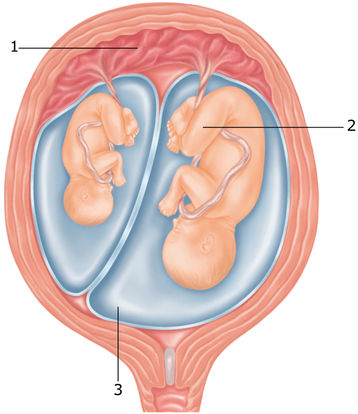10 weeks and 2 days pregnant

The baby’s head is just under half the length of his body. His limbs are still relatively short but the hands and feet can look quite big. Early basic trunk and limb movements are taking place but it’s too early to feel them at this stage.
Will it be a boy or a girl? Significant changes are taking place that enable your baby’s sexual organs to develop.
Hormones are influencing your unborn baby’s development and the ovaries or testes now begin to form. The testes will gradually descend but their structural development won’t be complete until your child hits puberty. The ovary will produce eggs but these will remain in the early stages of development.
A minute genital tube forms the external genitalia but each sex appears the same at this stage. This is not entirely surprising as the phallus is only 2.5mm long.
Your baby’s bladder and rectum have now separated. The kidneys will take some time to develop fully: two buds grow up from the bladder to the tissue that will become the kidneys, one on each side. These so-called ureteric buds form the ureters – the tubes that transport urine from the kidney to the bladder. The ureteric bud must successfully fuse with the kidney tissue in the pelvis. As the ureteric buds expand upwards, the early kidneys developing in the pelvis will move upwards to lie in the abdomen.
I have hay fever. Can I take antihistamines?
The potential effects of taking antihistamines in pregnancy aren’t known, so it’s best to err on the side of caution and not take them. However, if your symptoms are severe, see your doctor as there is one antihistamine available on prescription that can be taken during pregnancy.
Non-identical twins are always in separate amniotic sacs with a placenta each. If your babies are identical (from one fertilized egg) they may share the same placenta and sometimes also the amniotic sac, with a single membrane called the chorion surrounding them. These are known as monochorionic twins and require greater monitoring. The arrangement of the placenta and amniotic sacs can be analyzed on an ultrasound scan.
When twins share a placenta, their circulatory systems may also be connected. This can cause one twin to receive too much blood, which can lead to heart problems; the other twin will get too little blood and will not grow at the correct rate. This is called twin-to-twin transfusion and happens in about 10–15 per cent of monochorionic pregnancies. The imbalance can sometimes be corrected by draining amniotic fluid from around the twin with the greater blood supply, or by using laser treatment to seal off some blood vessels in the placenta. An early delivery may be necessary.

1. Shared placenta
2. One baby is bigger than the other
3. Amniotic sac
Be the first to support
Be the first to share
Comment (0)
Related Blogs & Vlogs
No related events found.
Loading more...